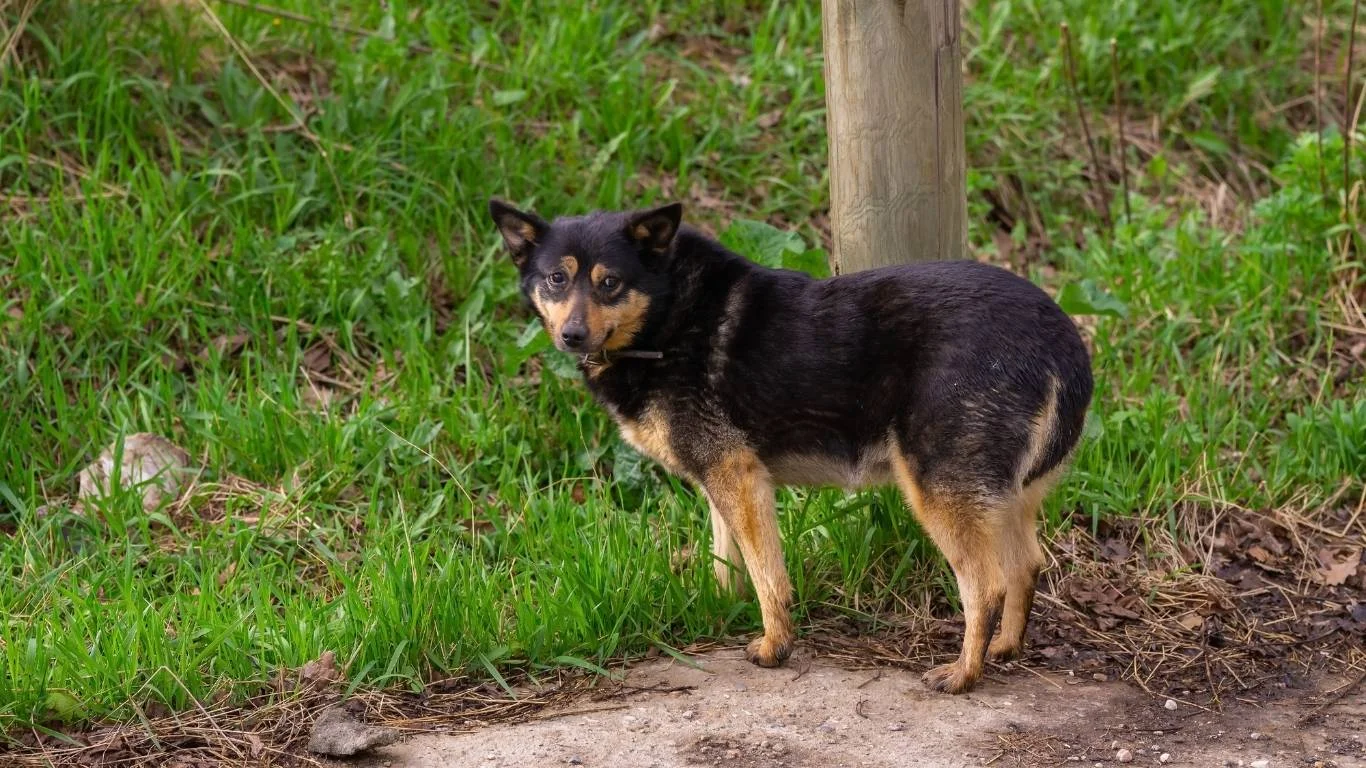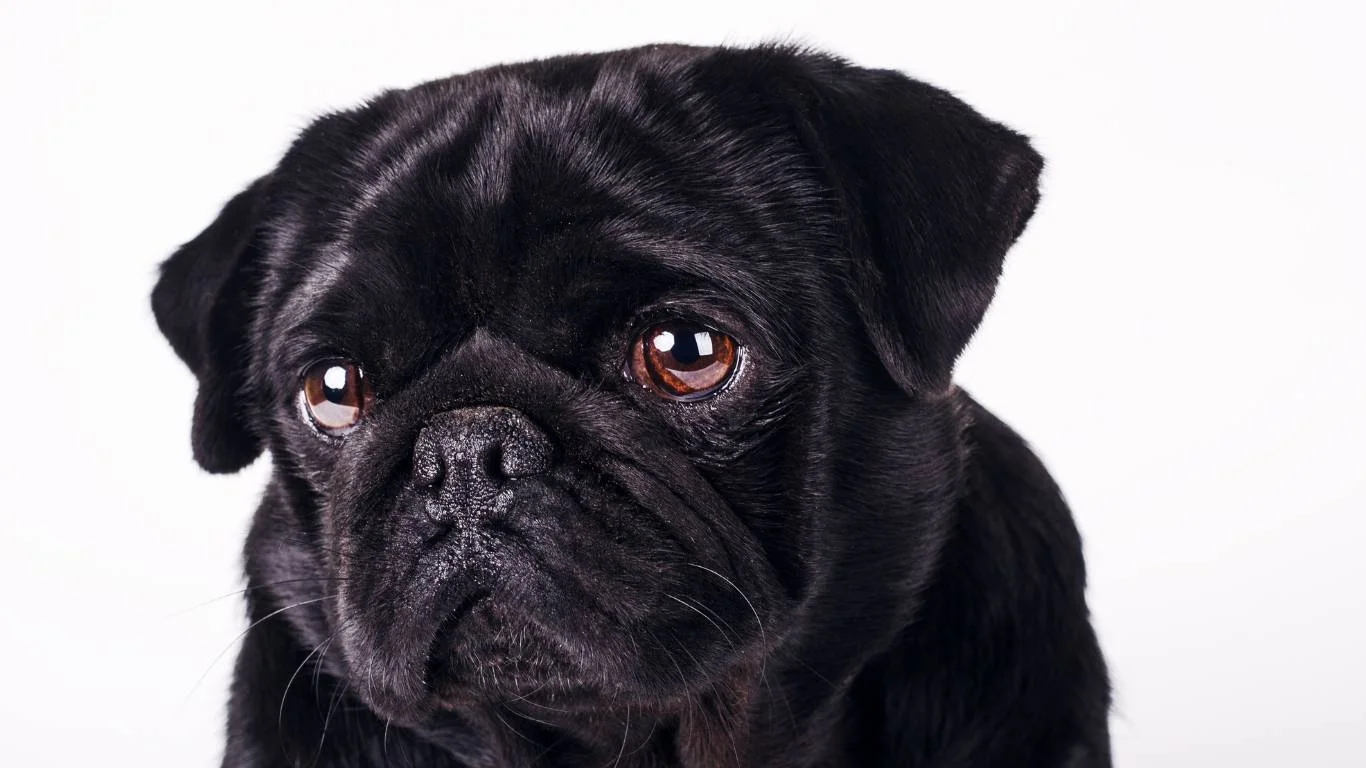Discover the Best Way to Introduce a New Diet to Your Dog
As a pet nutritionist and a pet care expert who has worked in veterinary clinics for several years, I’ve seen firsthand the impact of introducing a new diet to dogs. This process can be tricky, and pet owners often ask, “What is the best way to introduce a new diet to your dog?” There’s no one-size-fits-all answer, but I’ve gathered some tips based on my experience to help ensure your dog’s transition is as smooth as possible.
Why Changing Your Dog’s Diet is Important

Before we dive into the practical steps of introducing a new diet to your dog, let’s take a moment to understand why changing a dog’s food might be necessary. Whether you’re switching to a higher-quality food, responding to a health concern, or trying a new flavor your dog might enjoy, it’s crucial to do so thoughtfully. A sudden change in food can lead to digestive issues like diarrhea or vomiting, and no pet owner wants to see their dog feeling unwell.
Signs That It Might Be Time for a Diet Change
In my experience, many pet owners wait until something goes wrong before they think about changing their dog’s diet. However, there are signs that can help you determine when it’s time to make the switch. Here are a few things to look out for:
- Weight changes: If your dog is gaining or losing weight unexpectedly, it might be a sign that their current food isn’t the right fit.
- Changes in coat quality: Dull, dry fur or excessive shedding could point to nutritional deficiencies.
- Digestive issues: If your dog has regular stomach issues, like diarrhea or constipation, a diet change could help.
- Low energy or lethargy: A lack of enthusiasm during walks or playtime might indicate their diet isn’t providing the right nutrients.
If you notice any of these signs, it could be the perfect time to start thinking about introducing a new diet. Just remember, the key is to do it slowly and with care.
The Best Way to Introduce a New Diet to Your Dog

Now, let’s get into the meat of the topic—how to successfully introduce a new diet to your dog. This process requires patience, consistency, and a bit of trial and error. Based on my years of experience, I can tell you that taking it slow and monitoring your dog’s reaction is the best approach.
Step 1: Gradual Transition Is Key
One of the most common mistakes I see is owners switching their dog’s food too quickly. Imagine how upset your stomach would be if you suddenly ate something completely different from what you’re used to. For dogs, a sudden change can cause gastrointestinal distress. That’s why I always recommend a gradual transition.
Start by mixing a small amount of the new food with their current food. Over the course of 7 to 10 days, you can slowly increase the amount of new food while decreasing the old food. This allows your dog’s digestive system to adjust without causing upset. Here’s a simple breakdown:
- Days 1-3: 25% new food, 75% old food.
- Days 4-6: 50% new food, 50% old food.
- Days 7-9: 75% new food, 25% old food.
- Day 10 and beyond: 100% new food.
By the end of this process, your dog will be fully adjusted to the new diet. Remember to keep an eye on how they’re feeling throughout the transition. If they experience any discomfort like vomiting or diarrhea, slow down the process and give them more time to adjust.
Step 2: Watch for Allergic Reactions
Another aspect to consider when switching diets is allergies. While it’s not common for dogs to develop food allergies, it’s not impossible either. In my practice, I’ve worked with several dogs who had sensitivities to certain ingredients, whether it be chicken, beef, or grains. If your dog has a history of food allergies or you suspect they might be sensitive to something, it’s crucial to keep a close watch during the transition.
If you notice any signs of allergies such as itching, swelling, or changes in their stool, it’s best to stop the diet change and consult your veterinarian. They can help determine whether the new food is the culprit and recommend alternative options.
Choosing the Right Food for Your Dog

As a pet nutritionist, one of the most important pieces of advice I give to dog owners is to make sure they’re choosing the right food in the first place. Not all dog food is created equal, and the right choice depends on your dog’s age, breed, health conditions, and activity level. Some dogs need a specialized diet due to health issues, while others may do fine with an all-purpose, high-quality food.
When choosing a new food, it’s important to consider the following:
- Life stage: Puppies, adult dogs, and seniors have different nutritional needs.
- Breed size: Some dog breeds, especially larger ones, benefit from foods tailored to their size and energy requirements.
- Health conditions: Dogs with specific health concerns, like kidney disease or food sensitivities, may require specialized diets.
If you’re unsure which food is best for your dog, don’t hesitate to reach out to a vet or pet nutritionist. They can help guide you to the best choice based on your dog’s unique needs.
Maintaining a Consistent Feeding Schedule

When introducing a new diet to your dog, consistency is key. Just like humans, dogs thrive on routine. And that doesn’t just apply to when and how often they eat—it’s also about being consistent with the new food they’re getting. If you’re swapping your dog’s diet, try to keep their feeding times and the amount of food consistent as well.
In my experience, I’ve seen pets that get confused or stressed when their feeding schedule changes too frequently. So, aim to stick to regular feeding times. Whether it’s once or twice a day, maintaining a stable routine will help your dog’s digestive system adapt more effectively. Plus, it can ease any anxiety they may feel about their food changing.
Step 3: Monitor Their Behavior and Health
Once you’ve introduced the new diet and settled into a consistent routine, keep a close eye on your dog’s overall health and behavior. Some dogs take longer than others to adjust, and that’s okay. However, if you notice any concerning symptoms—like excessive lethargy, refusal to eat, or significant digestive upset—it’s important to address these issues promptly.
In my own experience, I’ve seen dogs that initially experience mild discomfort but adjust well after a few days. On the other hand, there have been cases where the transition period seemed to bring out underlying health issues, like food sensitivities or allergies. If your dog’s behavior changes significantly, it could indicate that the new food isn’t agreeing with them, and you might need to reconsider the transition or switch to a different formula. But don’t panic! Often, with a little patience and observation, things will balance out.
Step 4: Incorporate Hydration into the Process
Water is often overlooked when transitioning to a new diet, but it’s just as essential as the food itself. If your dog’s new diet is dry food, they may need extra hydration to help with digestion. Make sure fresh water is always available to keep them hydrated and help prevent constipation, especially if you’re making a switch from wet food to dry food. I’ve seen many dog owners forget about water intake when their pet’s diet changes, and it can cause some unwanted issues.
If you notice that your dog is drinking less than usual, consider adding some water to their food or switching back to a higher-moisture food for a while to make the transition easier on their digestive system. Proper hydration supports your dog’s overall health and helps them adjust smoothly to their new diet.
How to Handle Fussy Eaters During a Diet Change

As a pet care expert, I’ve encountered many picky eaters throughout my career, and transitioning them to a new diet can sometimes feel like an uphill battle. Some dogs are simply more selective about what they eat, while others may be hesitant to embrace new flavors or textures. If your dog is a picky eater, don’t worry—you’re not alone!
There are a few things you can try to make the transition easier on them:
- Warm up the food: Slightly warming the food can enhance the smell and make it more appealing to your dog. Just make sure it’s not too hot!
- Mix in something familiar: If your dog is refusing the new food, try adding a little bit of their old food or a tasty topper to the new food. You can use a small amount of plain cooked chicken or a bit of broth to make the meal more enticing.
- Try different textures: Some dogs may prefer wet food over dry, or vice versa. Experiment with different textures to find what your dog likes best.
During the diet change, be patient and persistent. Picky eaters often need a little extra encouragement. I’ve had clients who’ve tried a few different combinations of food, toppings, and even feeding techniques before they found a method that worked. The key is to stay calm and consistent, and not to give in to the temptation to offer treats or human food, which can undermine the transition process.
Why You Should Avoid Overfeeding During the Transition

When changing your dog’s diet, it’s easy to think that offering more food will help them adjust faster or that they’ll need more of the new food since they’re getting used to it. However, overfeeding can cause more harm than good during this delicate period. If you provide too much food during the transition, it could lead to digestive upset or weight gain. Remember, your dog’s stomach is adjusting to new ingredients, so it’s important to keep portion sizes consistent according to their needs.
It’s also a good idea to check the feeding guidelines on the new food packaging to ensure you’re giving them the appropriate amount. I’ve seen some pet owners unintentionally overfeed their dogs during transitions simply because they were unsure about portion sizes. By sticking to the recommended amounts and not overfeeding, you’ll help your dog adjust at their own pace without causing unnecessary stress to their digestive system.
Adjusting Portion Sizes Based on Activity Level
As your dog settles into the new diet, keep an eye on their activity level and overall weight. Some dogs may require slightly more or less food depending on their exercise routine, metabolism, and body condition. For example, a more active dog or one with a higher metabolism may need a bit more food than the package suggests. On the flip side, less active dogs might require fewer calories. Just like humans, dogs need a personalized approach to their diet. If you notice weight fluctuations, make small adjustments to their portions to ensure they stay at a healthy weight.
During the transition, I always advise my clients to consult with a veterinarian or a pet nutritionist if they have any doubts about how much food their dog should be getting. It’s important to keep an eye on their weight, energy levels, and overall health to ensure that the new diet is the right fit for them.
Tracking the Long-Term Effects of the New Diet

After the initial transition phase, you might be wondering how to ensure that the new diet continues to work well for your dog in the long term. In my years of experience, I can tell you that it’s just as important to track how your dog is responding to the diet after the transition as it is to monitor the initial changes. A diet might seem great at first, but you need to keep an eye on your dog’s health over time to make sure it’s truly benefiting them.
Monitor your dog for any signs of improvement or worsening of their condition. For instance, if they had digestive issues before the diet change, are they now feeling better? If their coat was dull and dry, is it now shiny and soft? Long-term effects of a diet change should be positive—better energy, healthier skin, and a more balanced digestive system. If these things are happening, you can be confident you’ve made the right choice for your dog.
That being said, it’s also possible that you might notice issues cropping up after the first few weeks. If your dog is still experiencing digestive problems, has skin irritations, or is gaining weight despite following the portion guidelines, it could mean the food isn’t a good match. Don’t hesitate to revisit your vet or a pet nutritionist to explore other options.
Adjusting to Your Dog’s Evolving Needs
As your dog ages, their nutritional needs will change. A puppy’s food isn’t going to be the same as an adult dog’s, and similarly, senior dogs will have specific dietary requirements that differ from younger dogs. So, even after you’ve successfully transitioned your dog to a new food, keep in mind that their needs may shift as they grow.
I’ve had many clients who were initially successful in transitioning their dog’s diet, only to find that their dog’s needs changed as they reached senior status. At this point, you may need to adjust their food again to cater to lower activity levels, changes in metabolism, or emerging health concerns like arthritis or kidney issues. The key is to keep an open dialogue with your vet to ensure your dog is always eating the right food for their current life stage.
Diet and Dental Health
One area that often gets overlooked when switching diets is dental health. I’ve spoken with countless pet owners who are unaware of the link between diet and their dog’s dental hygiene. Did you know that certain types of dog food can help reduce tartar buildup? Dry kibble, for example, provides some natural abrasion to your dog’s teeth, which can be beneficial in preventing plaque and tartar accumulation.
If dental health is a concern for your dog, make sure the new food you choose is helping to maintain healthy teeth. Some foods are specifically formulated with dental care in mind, while others may not offer much in this department. Regular brushing and dental check-ups are essential, of course, but a well-balanced diet can also play an important role in keeping your dog’s teeth in good shape.
Why Consistency with Treats Matters

When transitioning to a new diet, many pet owners overlook how treats factor into the equation. Treats can be a great way to reward your dog for good behavior, but they can also mess with the balance if you’re not careful. It’s tempting to offer your dog extra treats to make them feel better about the diet change, but overdoing it can lead to digestive issues, weight gain, or even cause your dog to develop a preference for unhealthy snacks over their regular food.
Personally, I’ve seen dogs who became so accustomed to high-calorie treats that they became disinterested in their meals. I recommend using treats sparingly during the diet transition and opting for healthier, low-calorie alternatives. This will not only help your dog adjust more easily to their new food but also avoid adding extra, unnecessary calories that could affect their overall health.
Balancing Wet and Dry Food for Maximum Benefit
Another question I get a lot is whether it’s better to feed your dog wet or dry food during a diet transition. There’s no one-size-fits-all answer, as each type of food has its own set of benefits. Dry food is often more affordable and easier to store, while wet food can be more appealing and help with hydration.
In my experience, many pet owners benefit from a mix of both. Some dogs enjoy the texture and crunch of dry kibble, while others prefer the smell and moisture of wet food. By combining the two, you can get the best of both worlds. Just make sure you adjust the portion sizes accordingly to prevent overfeeding. It’s also helpful to look for high-quality options that balance both wet and dry food, ensuring your dog gets the proper nutrients from both types.
When to Seek Professional Help
Even with all the information available, sometimes diet changes can be a bit tricky. If you’ve followed the steps outlined above and your dog is still having trouble adjusting to their new food, it might be time to seek professional help. A veterinarian or a pet nutritionist can provide tailored advice, check for food sensitivities, and help guide you through the process. They can also help identify any underlying health issues that may be making the transition more difficult.
Throughout my career, I’ve always emphasized the importance of working with professionals, especially when it comes to your pet’s health. Your dog relies on you to make the best choices for them, and sometimes that means asking for expert help. Don’t be afraid to reach out to someone who can offer personalized advice based on your dog’s needs.
Final Thoughts and Disclaimer
Introducing a new diet to your dog is an important process that requires patience, observation, and care. By gradually transitioning, monitoring their health, and making adjustments when necessary, you can set your dog up for a long-term, healthy, and happy life. It’s all about finding the right balance for your furry friend’s specific needs.
Remember, what works for one dog might not work for another, so it’s essential to listen to your pet’s body and make adjustments as needed. And if in doubt, don’t hesitate to seek professional advice—whether it’s from a veterinarian or a pet nutritionist—who can offer personalized recommendations. After all, every dog is unique, and finding the best diet for them is an ongoing journey!
Disclaimer: The information in this article is based on my personal experiences and knowledge as a pet nutritionist and pet care expert. It’s not meant to replace professional veterinary advice. Always consult with a veterinarian or qualified pet nutritionist for guidance on your dog’s specific dietary needs.






